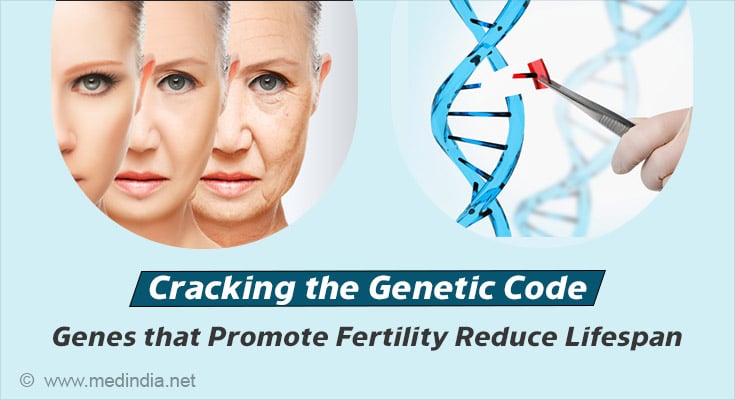According to George Williams, if aging-related genetic alterations are favorable early in life and encourage earlier reproduction or the birth of more offspring, then natural selection may favor them.
The dominant evolutionary hypothesis explaining senescence or aging is still Williams’ theory, now called the antagonistic pleiotropy theory of aging. Though there are case studies that lend credence to the idea, clear genome-wide evidence has been lacking.
Genes Influencing Fertility & Aging – A Double-Edged Sword
Using genetic, reproductive, and death-registry data from 276,406 individuals in the UK’s Biobank database, evolutionary biologist Jianzhi Zhang and colleagues conducted a new study to evaluate the Williams hypothesis (1✔ ✔Trusted Source
Evidence for the role of selection for reproductively advantageous alleles in human aging
Go to source
).
Advertisement
The researchers found a substantial negative association between longevity and reproduction, suggesting that shorter lifespans are linked to genes that promote higher rates of reproduction.
After looking at the frequency of 583 genetic variations linked to reproduction in the database, the researchers discovered that several of the variants linked to higher reproduction have increased in frequency in recent decades, even though they are also associated with shorter lifespans.
In addition, the study found that people with genes that make them more likely to reproduce at a high pace have a lesser chance of living to be 76 years old than people with mutations that make them more likely to reproduce at a low rate.
However, the scientists also point out that the environment also plays a role in lifespan and fertility. The authors further claim that the genetic factors covered in the study are very insignificant when compared to environmental influences, such as the effects of abortion and contraception on reproduction and the impact of medical advancements on lifespan.
Natural selection cares little about lifespan after the completion of reproduction because which also largely influenced by fitness by the end of reproduction. Fitness is a concept biologists use to describe the degree to which an organism’s traits increase its number of offspring.
Trends in Demographic Dividend Over the Years
Within the past few decades, there have been significant changes in human life expectancy, birth rate, and reproductive behavior. Birth rates have been declining consistently due to rising rates of abortion, contraception, and reproductive problems. However, from 46.5 years in 1950 to 72.8 years in 2019, the average human life expectancy at birth has increased across the globe.
However, compared with environmental factors, genetic factors play a minor role in human genetic changes.
In summary, although environmental factors that impact fertility and aging have been demonstrated, additional research is necessary to address the mounting evidence of high fertility and short lifespan across the genomic scale.
Reference :
- Evidence for the role of selection for reproductively advantageous alleles in human aging – (https:www.science.org/doi/10.1126/sciadv.adh4990)
Source: Medindia



